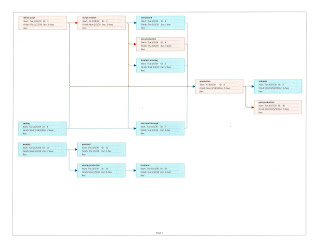 This iconic title became a common DVD bonus feature for movies in the 90s. Blockbusters like Twister, Titanic, Star Wars, Jurassic Park, and even the 1995 re-release of Jaws presented audiences with fun and detailed documentaries on the production of the film in their DVDs. These documentaries would also make their way into television with a limited release to promote the movies’ DVD launch, rerelease, or sequel. As a child, I enjoyed reading books about cinema, film making, and special effect giants like Industrial Light & Magic; when I discovered these “The making of…” features they became a way to truly immerse myself in the production process and learn more about the filmmakers behind cult-classics.
This iconic title became a common DVD bonus feature for movies in the 90s. Blockbusters like Twister, Titanic, Star Wars, Jurassic Park, and even the 1995 re-release of Jaws presented audiences with fun and detailed documentaries on the production of the film in their DVDs. These documentaries would also make their way into television with a limited release to promote the movies’ DVD launch, rerelease, or sequel. As a child, I enjoyed reading books about cinema, film making, and special effect giants like Industrial Light & Magic; when I discovered these “The making of…” features they became a way to truly immerse myself in the production process and learn more about the filmmakers behind cult-classics.  Given that we have to record our production process for our blog and for later use in our Critical Creative Reflection (CCR), I thought it would be a great idea to go back to my childhood and rewatch these documentary-style features to see how filmmaking role models like Gorge Lucas, James Cameron, and Stephen Spielberg. Usually, my research consists of me sitting in front of my computer screen surfing the internet for informative and reliable resources, rarely turning to a book for help; this time my research was a little different. My first step was to go through a few boxes in my garage to find my DVDs, then I realized I needed a DVD player to actually use them. Thankfully, my room’s TV has a built-in DVD because it has a few years on it, so I cleared a few hours of my schedule, grabbed a notebook, made some popcorn, and watched these features with a similar child-like wonder to that I feel when I walk into a theme park (I’m a huge theme park geek. As in, I know the maps of parks I haven’t even visited off the top of my mind. I have a Mickey ear hat and pins collection, I have Harry Potter wands and robes for when I visit Hogwarts, I… You get the idea).
Given that we have to record our production process for our blog and for later use in our Critical Creative Reflection (CCR), I thought it would be a great idea to go back to my childhood and rewatch these documentary-style features to see how filmmaking role models like Gorge Lucas, James Cameron, and Stephen Spielberg. Usually, my research consists of me sitting in front of my computer screen surfing the internet for informative and reliable resources, rarely turning to a book for help; this time my research was a little different. My first step was to go through a few boxes in my garage to find my DVDs, then I realized I needed a DVD player to actually use them. Thankfully, my room’s TV has a built-in DVD because it has a few years on it, so I cleared a few hours of my schedule, grabbed a notebook, made some popcorn, and watched these features with a similar child-like wonder to that I feel when I walk into a theme park (I’m a huge theme park geek. As in, I know the maps of parks I haven’t even visited off the top of my mind. I have a Mickey ear hat and pins collection, I have Harry Potter wands and robes for when I visit Hogwarts, I… You get the idea). 
While watching the features I noticed a lot of similarities between them. They were composed mostly of raw hand-held or no movement footage of the filmmakers going through the production process. At times, there was little to no audio from the actual raw footage and instead, the movie’s score or a filmmaker’s interview would play over it. Interspaced interviews with cast and crew (including executive producers and directors) were common in all the features. Some features juxtaposed the raw footage of filmmakers composing a shot to the final shots used in the film. I never thought of these features with such importance, but they give us an insight into the production and creative process of some of the most iconic movies of all time and some of the most influential filmmakers of all time. I’ve taken lots of notes about ways to improve the documentation of our production, and I’ll definitely be acting on these notes! I think it will be extremely valuable to both Jake and me to look back in a few years to this project and to our production documentation and see how we accomplished certain things; it’ll help us identify how we will have grown as media creators. Until then, there’s still quite a lot to get done in the present like writing our script (which we plan to start ASAP!).



















